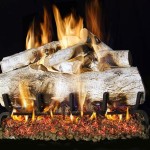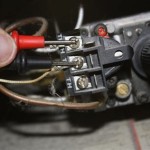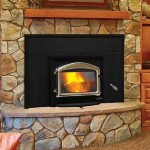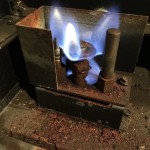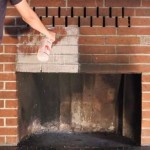How To Create A Fireplace
Creating a fireplace is a significant undertaking, often involving structural modifications and meticulous planning. The process varies greatly depending on whether a traditional wood-burning fireplace, a gas fireplace, or an electric fireplace is desired. This article will outline the fundamental steps involved in creating each type of fireplace, emphasizing safety regulations and essential considerations.
Planning and Preparation
The initial stage of fireplace creation involves thorough planning and preparation. This encompasses selecting the appropriate type of fireplace, determining its location, and ensuring compliance with local building codes and regulations. A crucial aspect of the planning phase includes assessing the structural integrity of the intended location and verifying the suitability of the existing chimney or the need for a new flue system. The architectural design also plays a significant role; the fireplace should complement the aesthetic of the room and integrate seamlessly with the existing décor.
For a traditional wood-burning fireplace, a primary consideration is the availability of a safe and functional chimney. An existing chimney needs inspection for structural soundness, proper lining, and adequate draft. If a chimney is absent, the construction of a new chimney will be necessary, involving considerations for height, diameter, and materials according to local codes. Permits are usually required for chimney construction and fireplace installation, requiring detailed drawings and specifications for approval by local authorities.
Gas fireplaces require a dedicated gas line installed by a licensed professional. The location of the gas line must be carefully planned, considering both accessibility and safety. Gas line installation implicates adherence to stringent safety protocols to avoid potential leaks or hazards. The size of the gas line must be sufficient to supply the required gas flow for the fireplace model selected. Furthermore, gas fireplaces also require proper venting to exhaust combustion byproducts, necessitating either direct-vent systems or connection to an existing chimney.
Electric fireplaces offer more flexibility in terms of installation. Since they do not require venting or fuel lines, they can be installed in virtually any room with access to an electrical outlet. However, adequate electrical capacity is essential to prevent overloading circuits. Some electric fireplaces require dedicated circuits to handle their power demands. Consider the aesthetic appeal of the electric fireplace, selecting a model that integrates harmoniously with the room's architecture.
Regardless of the type of fireplace chosen, careful consideration must be given to clearances from combustible materials. Local building codes specify minimum distances that combustible materials, such as wood framing and drywall, must be kept away from the fireplace firebox and chimney. Failure to comply with these clearance requirements poses a significant fire hazard.
Construction and Installation
The construction and installation phase is where the planned design is translated into reality. This requires precision, adherence to building codes, and careful attention to detail. For a wood-burning fireplace, the construction process may involve masonry work, including the creation of a firebox, hearth, and surround. The firebox is the core of the fireplace, designed to contain the fire safely. Firebricks, which are heat-resistant, are typically used to line the firebox, protecting the surrounding structure from extreme temperatures.
The hearth is a non-combustible platform extending from the firebox, providing a safe zone to prevent embers from igniting nearby flooring. The surround is the decorative element that frames the firebox, often constructed from materials such as brick, stone, or tile. The design of the surround impacts the aesthetic of the fireplace and contributes to the overall appeal of the room.
When installing a gas fireplace, the critical step involves connecting the gas line securely and testing for leaks. A licensed gas fitter must perform this task, ensuring that all connections are tight and leak-free. Venting must also be installed according to the manufacturer's instructions, ensuring proper exhaust of combustion gases. Direct-vent systems are typically used with gas fireplaces, drawing air from outside and venting directly through an exterior wall. The vent pipe must be installed with the correct slope and clearances to prevent condensation and ensure efficient venting.
Electric fireplaces are generally simpler to install than wood-burning or gas fireplaces. Many electric fireplaces are designed as self-contained units that can be placed against a wall or recessed into a pre-existing opening. However, wiring the fireplace to a dedicated circuit may require the services of a qualified electrician. Ensure the electrical outlet is properly grounded and capable of handling the fireplace's power requirements. Secure the fireplace to the wall or floor to prevent accidental tipping.
During the installation process, proper insulation plays a vital role in preventing heat loss and enhancing energy efficiency. Insulation materials, such as mineral wool or fiberglass, can be installed around the firebox or vent pipe to minimize heat transfer to surrounding areas. This reduces the risk of overheating and contributes to a more comfortable and efficient fireplace operation.
Finishing Touches and Safety Checks
The final phase involves adding the finishing touches and conducting thorough safety checks. This ensures the fireplace is not only aesthetically pleasing but also functions safely and efficiently. For a wood-burning fireplace, this may include applying a sealant to the masonry to protect it from moisture and staining. The hearth and surround can be decorated with decorative elements, such as mantels, tiles, or stone veneers.
A crucial safety check for wood-burning fireplaces is to ensure the chimney is clear of obstructions. Creosote buildup, bird nests, or other debris can block the chimney, leading to dangerous backdrafts and smoke leakage into the room. A professional chimney sweep should inspect and clean the chimney annually. Install a carbon monoxide detector in the room with the fireplace to provide early warning of dangerous carbon monoxide levels.
For gas fireplaces, the final safety check involves testing the gas line for leaks using a gas leak detector solution. Any leaks must be repaired immediately by a qualified gas fitter. Inspect the venting system to ensure it is properly connected and free of obstructions. Verify the proper operation of the pilot light and burner. Install a carbon monoxide detector in the room to monitor for any potential carbon monoxide leaks. These detectors are crucial for ensuring the safety of the occupants.
For electric fireplaces, the finishing touches usually involve concealing the power cord and ensuring the fireplace is securely mounted. Test all the fireplace functions, including the heating element, flame effects, and thermostat. Ensure the fireplace is not obstructed by furniture or other objects that could block airflow or create a fire hazard. Regularly inspect the power cord for damage and replace it if necessary.
Before using any type of fireplace for the first time, carefully read the manufacturer's instructions and safety guidelines. Familiarize oneself with the proper operation of the fireplace, including lighting procedures, temperature controls, and safety precautions. Educate all household members on the safe use of the fireplace and the importance of carbon monoxide detection.
Creating a fireplace is a complex project, demanding careful planning, skilled execution, and adherence to safety regulations. Whether it is a traditional wood-burning fireplace, a gas fireplace, or an electric fireplace, the key to a successful installation is meticulous attention to detail and a commitment to safety. By following the steps outlined in this article, one can create a fireplace that provides warmth, ambiance, and enjoyment for years to come.

How To Build A Fireplace Red Cottage Chronicles

How To Build A Fireplace Red Cottage Chronicles

How To Design And Build Gorgeous Diy Fireplace Built Ins A Home

How To Build A Diy Stone Fireplace Boxwood Design Co

Diy Fireplace Mantel And Surround Jenna Kate At Home

How To Build A Faux Fireplace For Your Cozy Home

How To Build A Fireplace Surround Beneath My Heart

How I Built A Faux Modern Farmhouse Fireplace Anderson Grant

How To Build A Faux Fireplace Mantel And Surround The Home Depot

How To Build An Indoor Fireplace The Constructor
Related Posts


